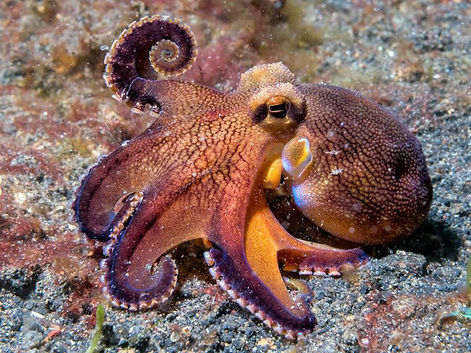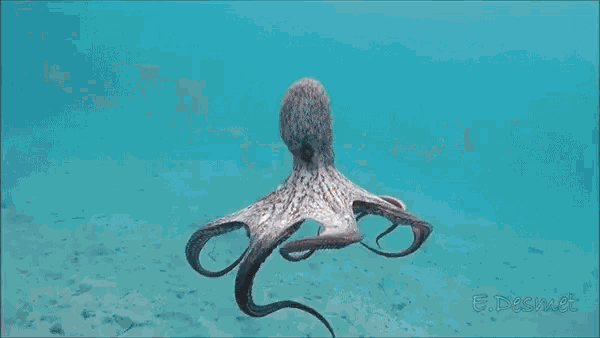BIOL630 TERM PROJECT

NAVIGATION
The oceans that octopuses call home are vast and expansive, covering about 70% of the planet. The ability to travel through those waters with a purpose, whether it is to find food, a mate, or a den, is an important feat for the octopus.
Short distance travel is common for octopuses of various species. To complete this kind of navigation, studies have shown that visual cues and landmarks are vital for directing octopuses. Both field studies and studies conducted in a laboratory confirm that octopuses will “follow” a landmark when they would change the location of it. One study had a beacon landmark move by 90 degrees each day, and every day the octopus would orient itself to this beacon (Mather, 1991). In the ocean, researchers used sonic tracking to follow octopus’ paths, and found that when an octopus was displaced, they would immediately go home to their den instead of retracing their original path (Mather, 2021). While visual cues are important for the octopus, octopuses have other ways to orient themselves in the water. The speed and direction of the water current, the temperature and salt content of the water, and the chemicals that may provide odors dissolved in the water are all other possible ways, but are still being researched (Darmaillacq, 2014).
Migration for octopuses looks different than it would for other vertebrates. Migration is defined as the periodic movement of an animal from one region to another (Hill, 2018). While the image of an ocean-wide migration might be in mind, octopuses don’t migrate “horizontally”, or from one place to another across the ocean. Instead, they are known to migrate from shallow to deep water depending on the time of year. The common octopus, O. vulgaris, prefers cooler water, so during the warmer months, this octopus will submerge itself deeper waters to avoid the warm waters near the surface (Katsanevakis and Verriopoulos, 2004). When the weather cools down again, it will migrate closer to the surface where they prefer to be.
